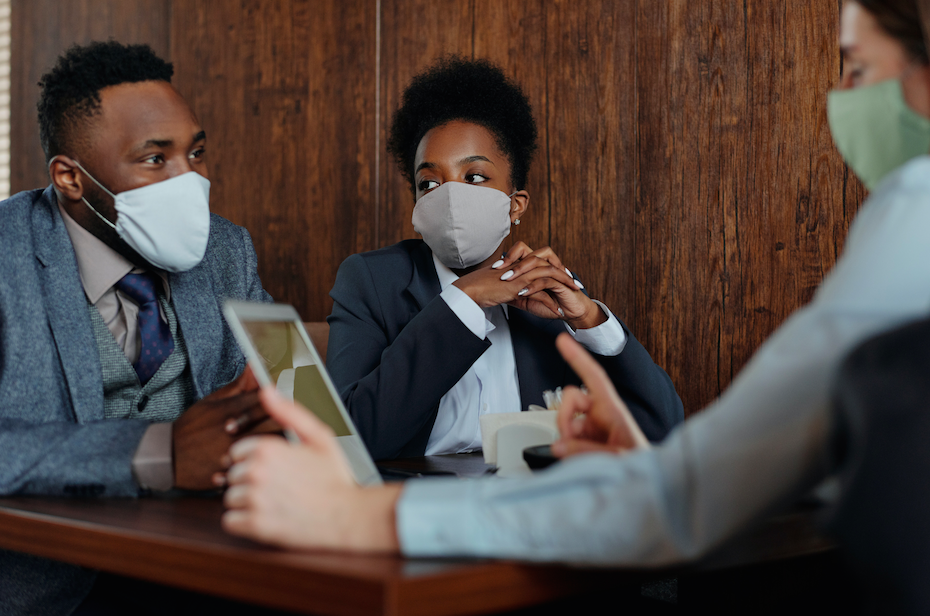With the country still uncertain about how to proceed, many companies are torn between summoning staff back to the office or letting them continue to work from home. What is clear is that the future of the office space has been changed significantly due to the events of the coronavirus pandemic. Here are some trends to expect as people head back to the office in 2022.
Could life resume to normal?
Recent updates from No.10 have proposed the idea of stripping all kinds of covid restrictions and treating the virus as just another cough or cold. This means no testing, no isolating, no taking off work or need to work remotely. Whilst currently something that has been proposed, it could be a slow transition but a very possible reality and people will be returning to office spaces in London as it were pre-covid.
The implementation of vaccination policies
Some offices and employers are implementing compulsory vaccination across their workforce. For example, Goldman Sachs is just one of the companies that has already declared compulsory booster vaccinations for any employees and visitors entering their office buildings from February 1st.
One of the key concerns for employers will be bringing infected workers back to the office as quickly as possible. This means that they will need to invest in testing and work on their processes. Many big firms have already started to invest in bulk tests in order to plan for this. Businesses will need to carry out workplace testing in a safe and controlled way to mitigate the risk of Covid transmission among staff.
The vaccination topic is a controversial one with many people choosing not to be vaccinated or, in some cases, unable to receive the vaccine. Now, this will impact whether or not they are able to come into the office or, in extreme cases, whether they will even be able to keep their current jobs.
Not coming in when sick
Gone are the days of being a martyr at work, valiantly working through a bad cold and spending the day sniffing at your desk. One of the predictions for 2022 is that workers will start to take more personal responsibility when they are sick and choose to stay home. Ultimately, this will fall on the individual to decide whether they are well enough to come into work and whether they have symptoms or are contagious.
Staff will need to take responsibility for basic personal hygiene such as regularly washing their hands, using hand sanitiser and choosing to keep social distance in high-risk settings. Hopefully, staff will also be responsible on the journeys in and out of work, choosing to wear a mask on public transport and avoiding high-risk situations and crowds when possible.
Hybrid working continues
Hybrid working was born out of necessity thanks to the restrictions of the coronavirus pandemic; however, it is not a trend we can expect to see disappearing anytime soon. As experts are still unable to predict the many modifications and variants that this virus brings, it is difficult to say whether or not there will be further lockdowns and restrictions. For that reason, companies will need to be flexible and agile, able to adapt to whatever the external circumstances whilst still maintaining their workforce and level of productivity.
As the severity of the virus and its variants decreases, Covid will stop having the impact that it has had up to this point. However, it may mean that, like the common flu, it is more rife during certain times of the year. This means that flexibility of workplace, communication between employers and staff, and adaptability of job role, will be paramount during 2022.

Changing isolation guidelines
The recommended isolation period is constantly fluctuating in accordance with government policy and is expected to keep undergoing revisions. This will have an impact on the workplace as employers will be concerned about getting their staff back to work as soon as possible. What is clear is that the 10-day and 7-day isolation periods have severely impacted work productivity and led to detrimental staff shortages for many companies.
As coronavirus becomes more endemic, and people become more immune, it is thought that this isolation period will be reduced or, eventually, removed completely. In this way, it will become like a flu or cold, meaning that people are off work for a couple of days maximum before coming back to work.
Increased spending on hygiene & cleaning
With staff safety and hygiene being a key priority for companies, it will be the responsibility of the employer to ensure that the office is a safe place to work. This may mean increasing the budget for things such as deep cleaning, adequate ventilation systems and stations for hand sanitisers and hand washing, especially in hotspot areas like the main entrance to the building.
Reduced contact for workers
One of the key changes for offices as workers go back is that social interaction, at least to start with, will need to be limited. This can affect the company at many different levels, from the number of people allowed in a meeting, to corporate events, even to the layout of the office space.
Responsible practices in the office could help to reduce the risk of transmission by limiting the number of people each of the workers comes into contact with.
